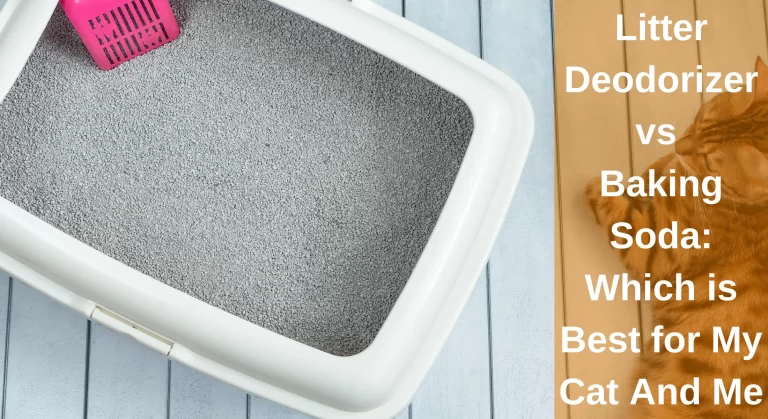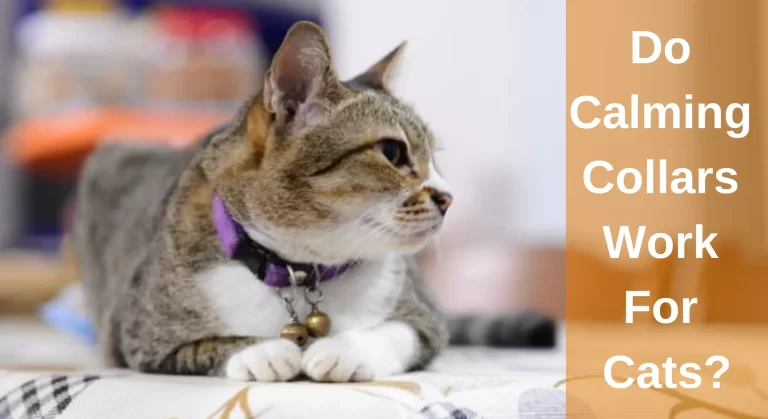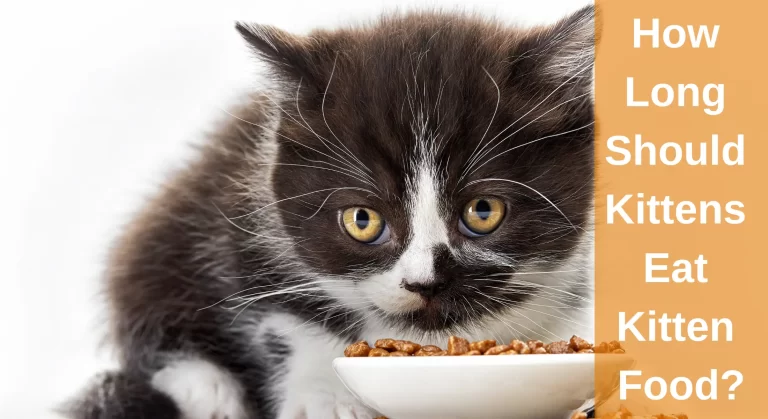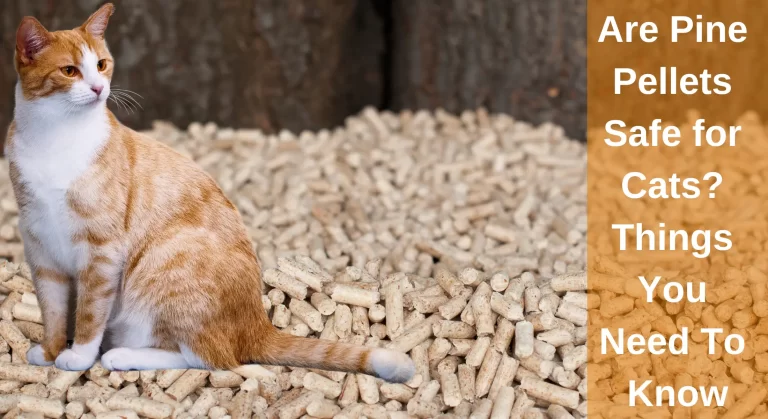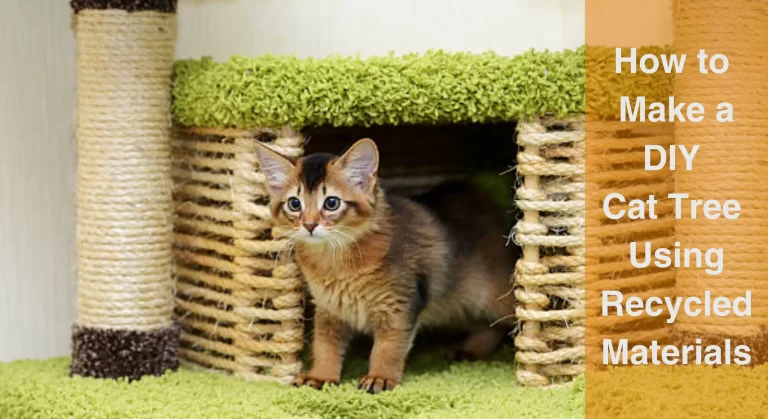Why Is My Cat Throwing Up Bile for Days? Causes And Treatment
A cat’s liver produces bile, a yellow or green liquid that assists in food digestion. Bile vomiting in cats may be frightening for both the cat and the anxious owner. A cat throwing up bile for the first time can be pretty alarming, but if they do it repeatedly for three days, you start to worry about what causes this. Why is my cat throwing up bile for days?
A cat will vomit bile when they are empty-stomach, suffering from indigestion, or suffering from stomach irritation. This can happen when feeding your cat in the morning or letting your cat go without food for an extended period of time or it can happen when are anorexia, or other issues such as kidney disease, liver disease, endocrine problems, hairballs, and gallbladder inflammation.
Knowing the warning signs and symptoms of bile vomiting is crucial to understanding when veterinary help is required. I’ll explore all the underlying causes as well as potential treatment options. Keep reading to learn how you can help your cat.
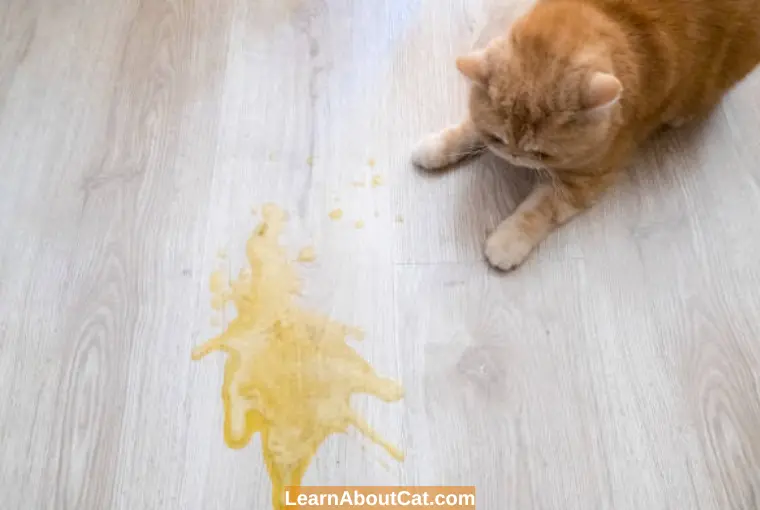
Why Is My Cat Throwing Up Yellow Liquid?
It is typical for cats to vomit with bile before eating in the early morning or late at night, especially if they receive a single daily feeding, but it can also occur at any time. Most often, older cats are affected by this condition; it is rare in cats. Both genders are equally affected.
The exact reason for bile vomiting is frequently unclear. Your veterinarian should rule out any of several disorders that might be the cause of the ailment. Typical causes might be:
1. Indigestion
Like some people, some cats get dyspepsia. Indigestion, sometimes referred to as acid reflux, is brought on by the bile, stomach acids, and digestive juices moving upward into the oesophagus. As a result, the oesophagus becomes inflamed and painful.
Undigested food may be vomited up by your cat due to indigestion, giving them an upset stomach. As a result, your cat may eventually stop eating altogether. Cats who vomit when they are hungry also vomit bile.
2. Persistent kidney Disease
When the kidneys cease working as they should, it results in chronic kidney disease (CKD). This disorder causes the body to accumulate toxins and have trouble concentrating urine, resulting in various symptoms. Unfortunately, many of these clinical symptoms are initially modest, and CKD becomes more evident as the disease progresses. Stomach ulcers are brought on by the excess acid, which also causes gastritis and vomiting.
3. Endocrine Disorders
All problems brought on by obstructed hormonal pathways or excessive or insufficient hormone production are endocrine diseases, including hyperthyroidism. Another frequent cat example is diabetes.
These two disorders both result in vomiting. A change in stomach motility and an increase in metabolism bring vomiting in cats with hyperthyroidism. Vomiting in diabetic cats is primarily brought on by hypoglycemia or low blood sugar.
4. Inflammation of the Gallbladder
The liver creates bile but is kept in the gallbladder, a different organ. Cholecystitis, an inflammation of the gallbladder, is a medical condition. Up until your cat eats, the bile is still in the gallbladder. Food ingestion stimulates the gallbladder to constrict and release bile into the stomach and small intestine to aid digestion.
5. Vomiting Bilious Syndrome
After being without food for a while, cats with bilious vomiting syndrome (BVS) vomit bile. This bile leakage is harmless while food is present in the stomach. Felines begin to vomit when there is an empty stomach as this naturally occurring chemical irritates the lining.
6. Pain in the Stomach
Cats who have gastritis, or stomach inflammation, may vomit. I have already described how BVS may irritate the stomach lining, but gastritis can originate in many other ways. It is typically brought on by cats ingesting something they shouldn’t. When she was a curious kitten, my cat used to do this frequently, but happily, she calmed down as she got older.
The most typical clinical symptom of stomach irritation is a sudden, severe loss of appetite, which is second only to vomiting. Due to an empty stomach, your cat will start vomiting bile instead of partially digested food.
7. Anorexia
Most cats adore eating and even urge their owners to give them food. However, some cats struggle with anorexia. Feline anorexia is typically brought on by a disease that makes cats queasy rather than a dread of gaining weight. Cats that are “picky eaters” or under stress may also eat less than they ought to. Anorexic cats are likelier to vomit bile every time because bile-throwing cats have empty bellies.
8. A Liver Condition
Cats can get the liver disease when their livers are damaged. The creation of bile is one of the numerous processes the liver is engaged in. As a result, there are a variety of clinical symptoms in cats with liver illness. They frequently involve skin discolouration, appetite loss, and overall weakness.
Another potential symptom is vomiting. If your cat gets sick for more than three days, frequently enough, its stomach contents will rapidly become depleted.
9. Hairballs
Your cat’s hooked tongues collect stray hair from its coat as it grooms itself. Along the GI system, hairs that are mistakenly ingested collect. Depending on the hairball’s size, it can take time for your cat to cough up effectively. Your cat could vomit bile in addition to retching and gagging.
Also Read: Why Is My Cat Throwing Up Hairballs Daily?
Should I Be Worried If My Cat Throws up Bile?
Almost all pet owners have experienced their cat puking. As a result, it may be challenging to determine whether you require expert assistance from a veterinarian.
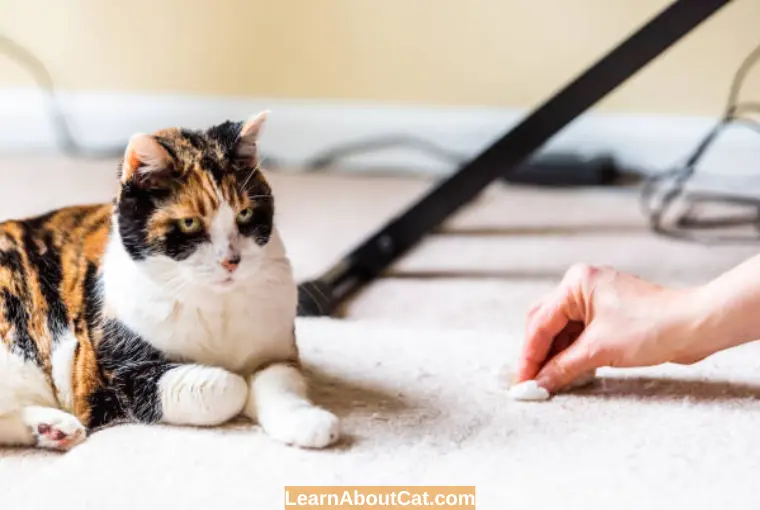
Is your cat vomiting but otherwise acting fine? If so, there’s usually no need for you to call the vet. But if your cat has been spitting up bile for three days or more, you should pay attention. Other indications that you shouldn’t disregard your cat’s vomiting include the following:
- Feline has diarrhoea or constipation and is vomiting up bile.
- She cannot hold any food down after eating and is vomiting up.
- Your cat is not eating and is napping all day.
- They are consuming too much water.
- It has gone more than 12 hours without any food or water.
They may have a dangerous problem if these conditions apply and they are vomiting frothy, yellow, or green liquid. Mainly critical conditions include renal failure and liver dysfunction. These illnesses are fatal and progressively worsening. The prognosis for your pet is considerably improved by prompt care from a qualified practitioner.
How Do You Treat Bile Vomiting in Cats? Treatment for Cat Throwing up Bile
Your veterinarian may suggest diagnostic tests to identify the source of the vomiting if your cat needs veterinary care. Potential diagnostic procedures include radiography (X-rays), ultrasonography, urinalysis, electrolytes, thyroid levels, blood chemistry, and complete blood counts.
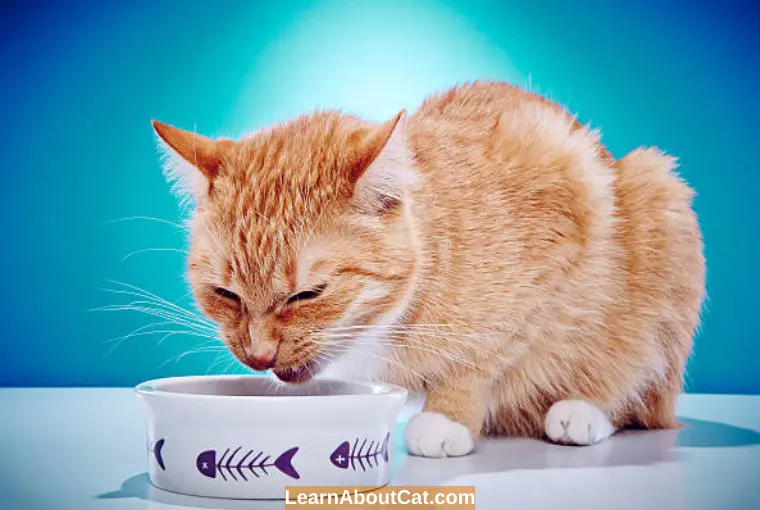
Sometimes, your cat’s bile-filled vomiting will stop on its own. Depending on the underlying reason, many treatment options are available when the illness is persistent. For animals with upset stomachs or food allergies, your veterinarian may prescribe an approved cat food mix if the problem is food-related. Additionally, they could change the quantity or regularity of your cat’s food.
Suppose a diet or food modification doesn’t relieve your pet’s symptoms. In that case, the veterinarian may prescribe particular medications, such as antibiotics for infections or drugs that affect digestion, to increase your pet’s ability to digest food or reduce the amount of bile in the digestive tract.
Why not divide your cat’s food into numerous smaller pieces given throughout the day rather than feeding them once in the morning and once in the evening? Your cat’s tummy will stay fuller for longer if you do this. Sometimes, probiotics are recommended by a vet.
Recovering Bile Vomiting in Cats
The underlying disease will determine the prognosis. It may take some time for stomach problems to heal completely, and your cat’s digestive tract frequently has to be reset, and vital beneficial bacteria balances need to be regrown. If you’re taking prescription medication, it’s crucial to finish the entire course of treatment for the disease to be resolved.
Following the suggested meal schedule and maintaining a regular diet can help reduce symptoms fast with food-based treatments. If the dietary regimen is changed, the results will be long-lasting. Most cats with this illness will react favourably to ongoing nutritional or pharmaceutical therapy.
How To Prevent Vomiting In Cats?
If your cat vomits, you probably cannot prevent it. Some cat illnesses go undiagnosed, but you can reduce the risk of contracting them.
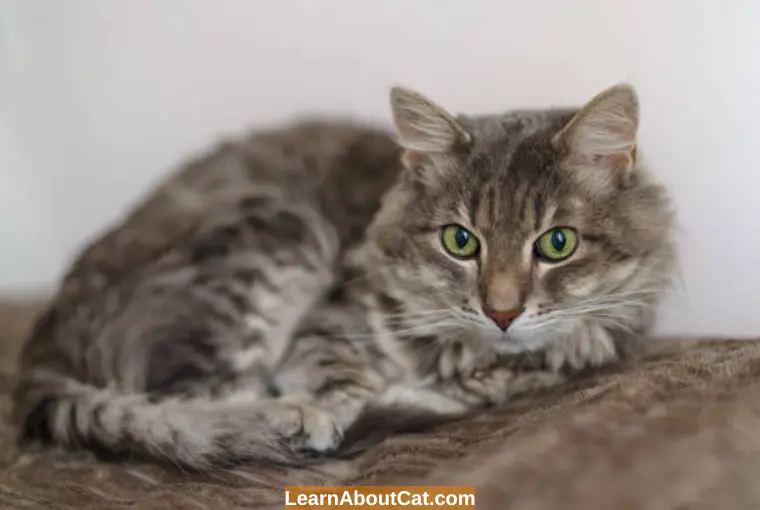
- Ensure that your cat is fed a healthy diet that contains meat-based protein and is balanced and complete, as defined by the AAFCO
- Make sure your cat cannot reach objects that could become foreign bodies, such as strings, ribbons, hair ties and other small, appealing items.
- Any possible toxins should be kept out of reach of cats, including plants, chemicals, and human food.
- At least once a year, or more often if your vet recommends, take your cat to the vet for routine wellness checks.
Whenever you notice an early sign of illness, contact your veterinarian immediately. Delaying will only make the situation worse.
Frequently Asked Questions
Is bile vomit from cats normal?
The cause of this type of vomit may be a hairball, but it can also signify an infection, kidney problem, or problem with the endocrine system. This type of vomiting should also be evaluated by a veterinarian if it occurs frequently.
What can I give my cat for throwing up bile?
The most commonly prescribed treatment for bilious vomiting syndrome is to increase feeding frequency or leave food out all the time.
Medications (e.g., famotidine, omeprazole, metoclopramide, or maropitant) may solve the problem if more frequent feedings are not adequate. You must consult the vet before using any medications.
What does yellow liquid vomit mean?
A green or yellow substance called bile is produced by the liver and stored in the gallbladder. When Cat vomits on an empty stomach or suffers from bile reflux, they release bile.
Why is my cat vomiting and not eating?
If your cat is nauseous, it will likely not eat. This can happen with many conditions, including foreign bodies, kidney conditions, severe diabetes, inflammatory bowel disease, etc.
Why is my cat throwing up yellow-green liquid?
When a pet vomits yellow after not eating yellow foods or foods with yellow food colouring, the vomit is probably from the stomach. Vomit that is green is usually the result of food or substance being brought up from a location after the stomach has been emptied. Vomit that has been mixed with bile will appear green or greenish.
What does normal cat vomit look like?
The normal colour of cat vomit varies from pale yellow to brown and looks like partially digested food. You may notice that your vomit is semi-solid or liquid, and small amounts of stomach fluid or hair may be present as well. Cats that ate grass and bones may also have undigested food particles in their vomit.
Wrap Up!
Vomiting once in a while is nothing to worry about. Unfortunately, it’s just a typical aspect of cat ownership! Bile, however, is more worrisome since it indicates that your cat is starving. An even greater cause for concern arises if your cat continues to urinate bile for more than three days. As soon as possible, take your cat to the doctor for a diagnosis so your furry buddy can begin a successful treatment plan.
Related Posts:
- Why Is My Cat Throwing Up Undigested Food?
- My Cat is Not Eating Much But Acting Normal Why?
- Why Is My Cat Keeps Gagging But Nothing Comes Out?
- Older Cat Not Eating But Drinking: Reasons And How to Help
- Cat Not Eating or Drinking- How Long Can a Cat Survive?
- My Cat Is Eating And Drinking But Not Peeing Why?
- Signs Your Cat is Dying of Thyroid Disease
- Vomiting Vs Regurgitation In Cats
Who is Isabella?
My name is Isabella, and I am a dedicated and knowledgeable cat enthusiast. With years of experience caring for cats and a deep love for felines, I made a mission to help other cat lovers navigate the challenges of cat ownership.

